As temperatures rise this summer, so do our air conditioning and utility bills. While running your AC more each day doesn’t seem like much, Payless Power reports that AC units “release some 100 million tons of carbon dioxide into the air each year – or about 2 tons per home.”
Not only do these CO2 emissions have a harmful effect on the environment, but using AC frequently also has a huge financial cost. Residential AC units account for “more than $11 billion” in electricity consumption “which accounts for 5% of all electricity produced in the country (Payless power).”
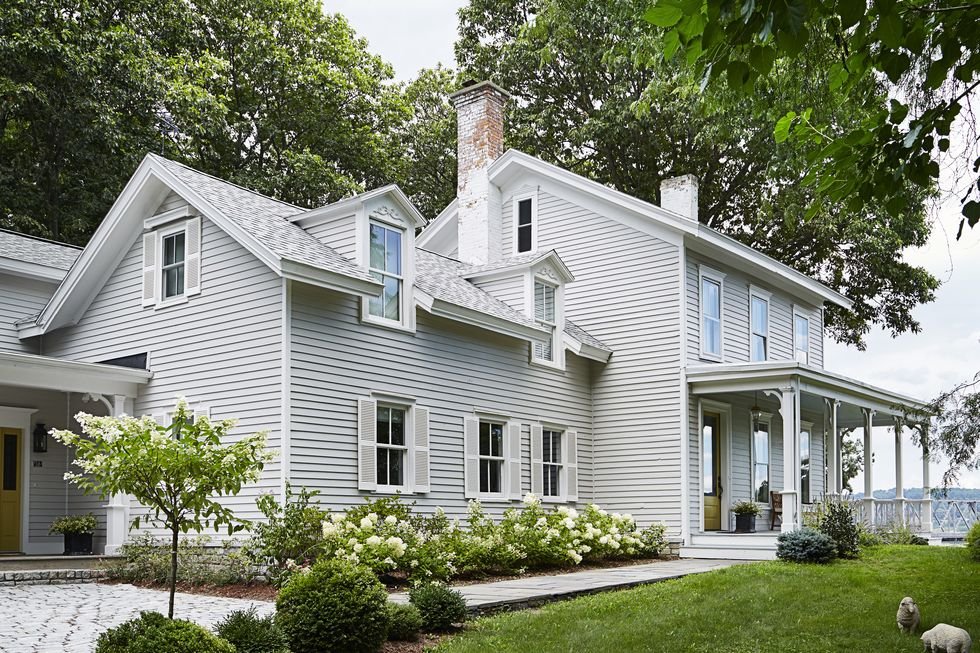
So using more AC does have a significant impact when looking at the bigger picture. We’ve come to rely on air conditioning so much, that you might be wondering how to cut back on your AC usage without boiling in the summer heat? Well, there are a lot of easy steps you can take to use less AC while still staying cool and comfortable. If you want to save money on your utility bills while doing good for the planet, check out our tips for living an eco-friendly summer.
Make Use of Fans
To use less air conditioning, think about making use of fans more often. There are lots of different types of fans you can take advantage of. Ceiling fans are great to create airflow in a space, while window fans help bring in cool air from outside. Also, consider getting a window fan with reversible airflow, this is because at certain times of day you’ll want to bring cool air in, and at others, you’ll want to push hot air out.
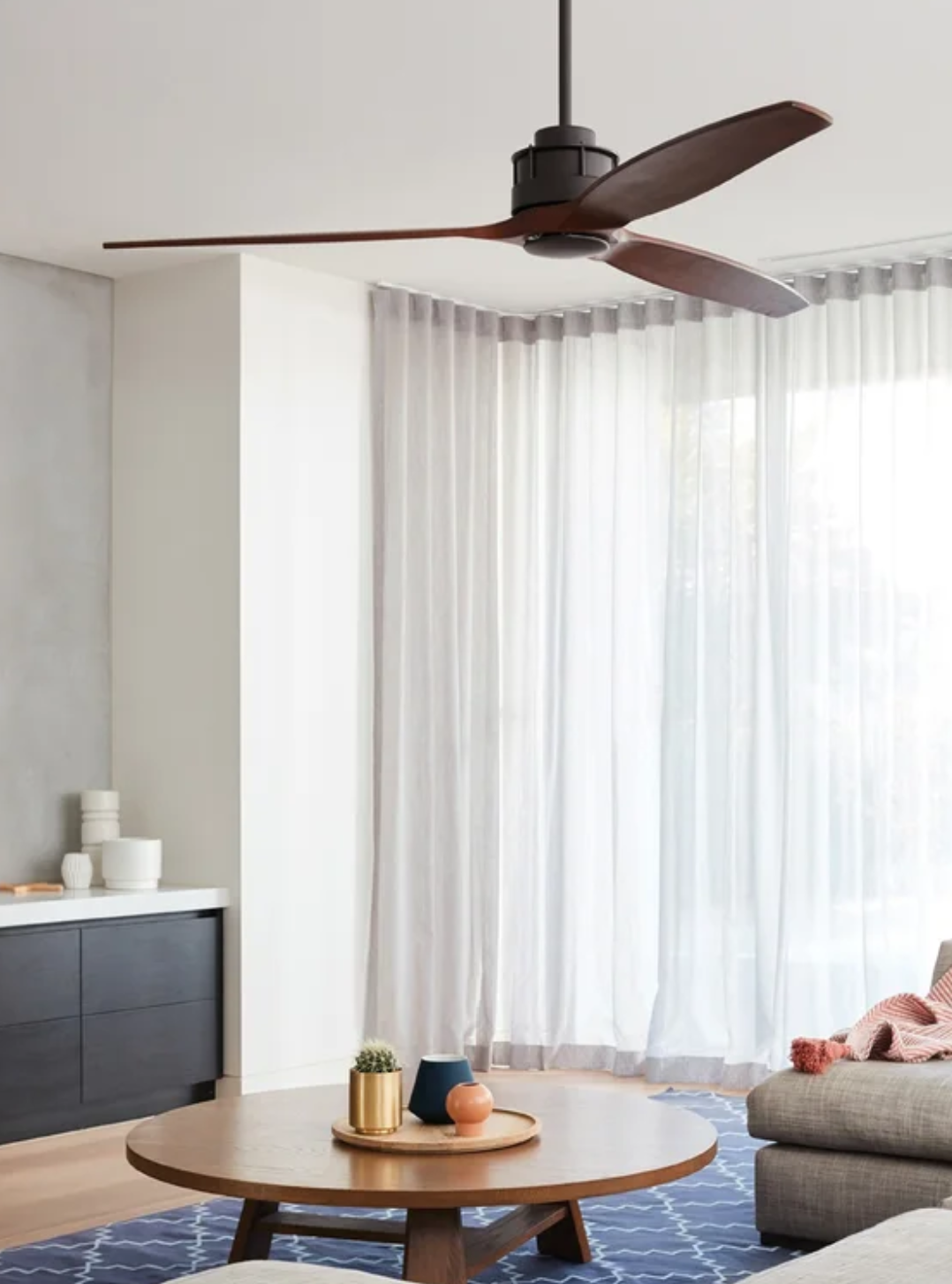
For more of an impact think about installing a whole house fan. The fan gets installed in your attic or roof and pulls cool air into your home through open windows while pushing hot air out through attic vents. However, they don’t work for all homes or climate types. They work best in drier climates where temperatures cool down in the evenings. Speak to a professional if you’re not sure if one is right for your home.
If you have an attic, then hot air may be trapped up there affecting the temperature of the rest of your home. Think about installing attic vents or an attic fan to improve ventilation, which will help reduce the temperature in the rest of your home.
Window Treatments to Keep Out Heat
Another way you can help cool your home is to install solid window treatments to block sunlight and reduce heat. Think blackout shades, solid curtains, shutters, and blinds. By keeping direct sunlight out of rooms when they’re not in use you can help keep them cooler.
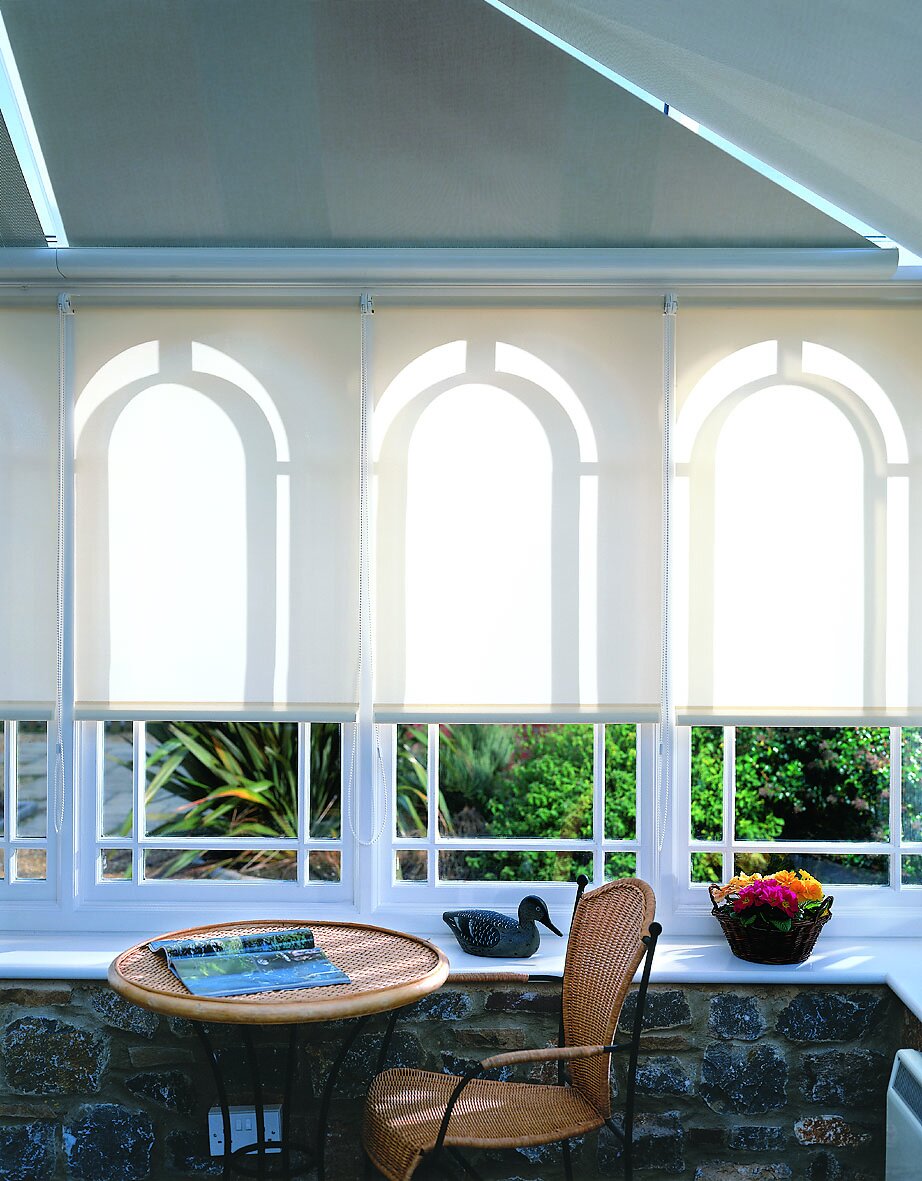
Simply closing all the shades and blinds if you’re stepping out for the day can make a big difference.
If you live in a very sunny climate, then you may want to consider tinting your windows to help keep out some of the harsh sunlight. Or to really combat the sun, think of getting thermal blackout shades that are made to keep out as much sunlight and heat as possible.
Incorporate Shade Around the Exterior of Your Home
Adding shade to the exterior of your home not only makes it more enjoyable to spend time outside during the summer months, but it can help keep your interiors cooler as well.

Things like landscaping with vines or trees, awnings, umbrellas, or other shade structures can prevent direct sunlight from coming into your home and heating things up.
Enjoy Plants Indoors
Don’t forget about incorporating plants inside your home. There are countless benefits to having plants indoors. Not only do plants look great and help purify the air, but they help cool your home too! They do this through the process of transpiration, which means when an environment heats up plants release excess water from their leaves into the air. This, in turn, helps cool themselves and the surrounding environment.

So be sure to load up on indoor plants this summer. For some ideas, check out House Beautiful’s list of top house cooling plants.
Combat Humidity
If you live in a humid climate then you’ll want to adopt some tricks to combat humidity to keep your house more comfortable without needing to blast the AC 24/7.
Keeping windows closed until the temperature drops is often best because there isn’t as much cool air outside to circulate within your home.
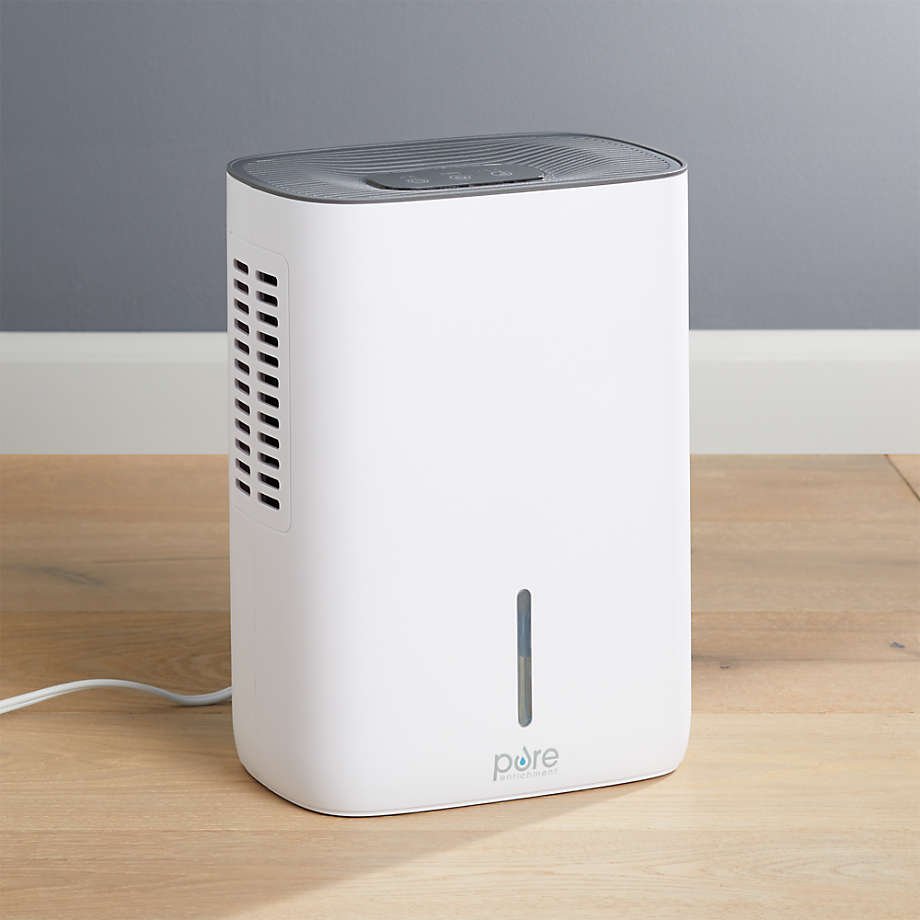
Consider getting a dehumidifier (or several) that will take the excess moisture out of the air and help create a drier cooler environment indoors. When looking for a dehumidifier larger is better. This is because it can pull out water more quickly while using less energy and has a longer lifespan.
Cook Outdoors
Not only is cooking outside a fun summer activity, but it can also help keep your home cooler.
Using stoves and ovens inside quickly heats up your kitchen, making the rest of your home feel warmer.
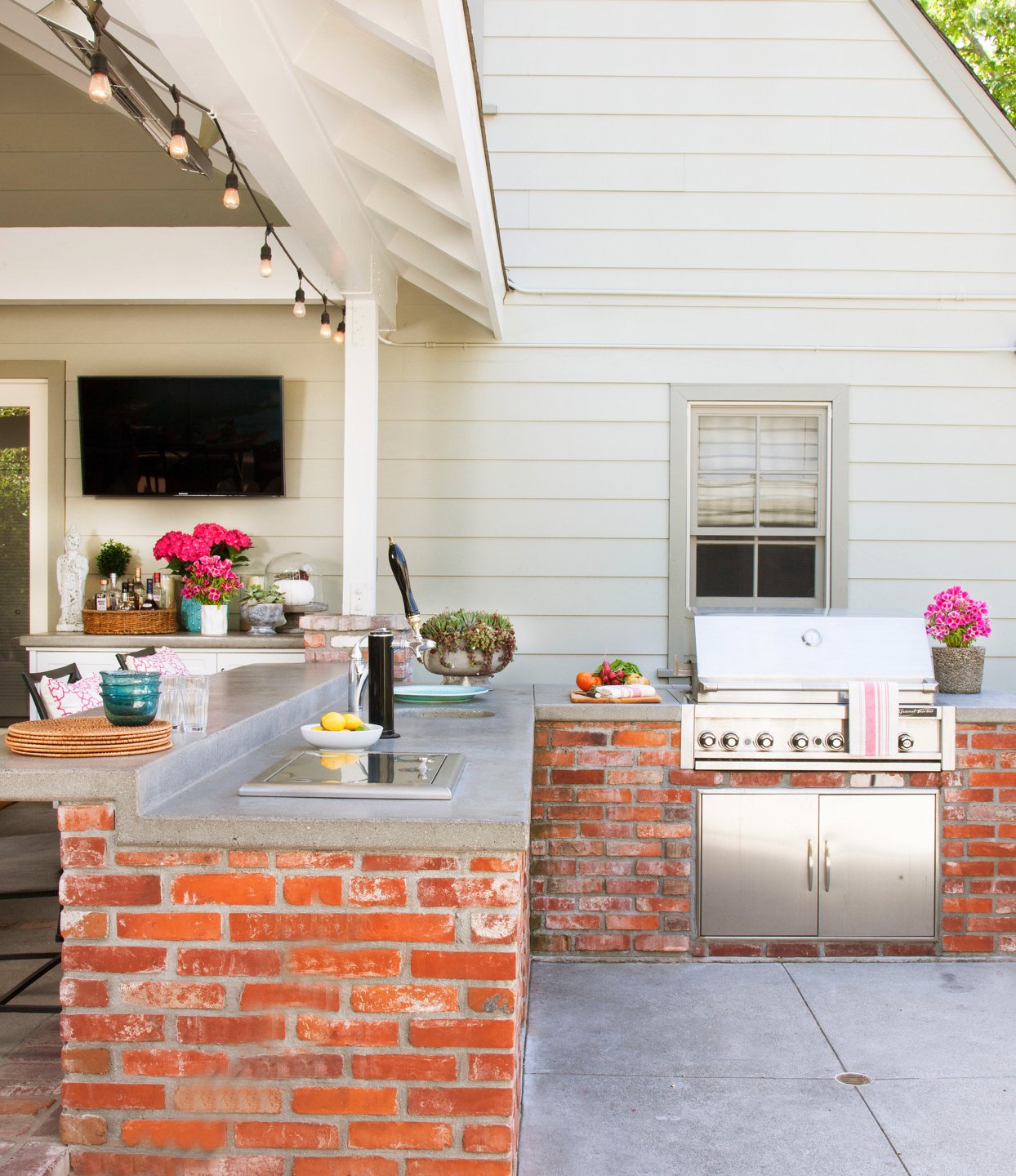
Though it may not be realistic to cook all your meals outside, but making an effort to cook outside more often and avoid using your stove or oven when possible will help. Instead, when you need to cook indoors opt for smaller appliances that generate less heat like an air fryer, toaster oven, or microwave.
Reduce Electricity Throughout Your Home
Not only is using less energy throughout your home an eco-friendly practice in general, but it can also help keep your home cooler.
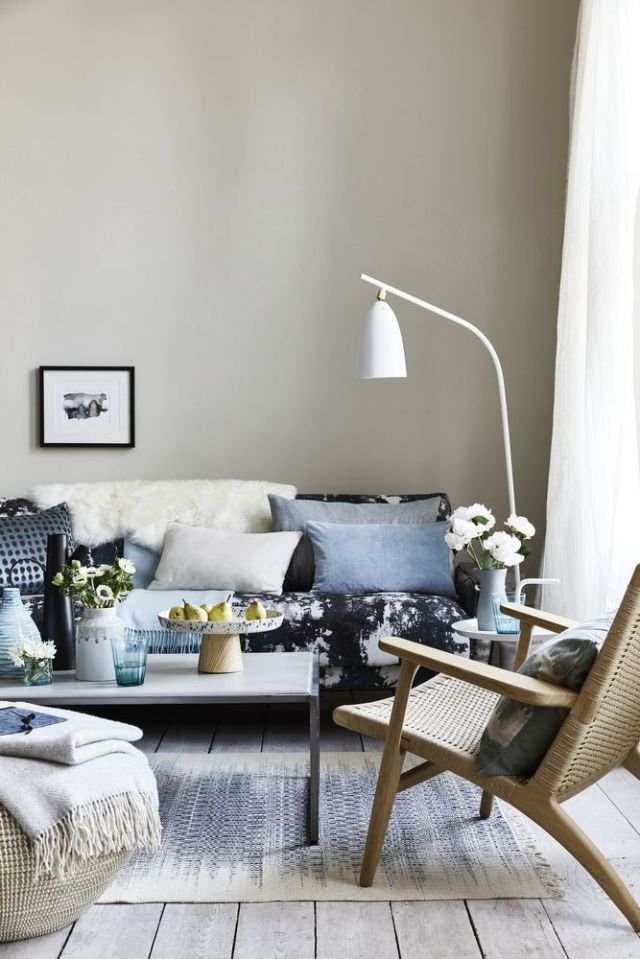
Leaving your devices on and plugged in when not in use, generates unnecessary heat. To avoid having to unplug all of your devices after each use think about using power strips so you can turn off and unplug multiple devices at once. Or for an even better solution, there are power strips designed to conserve energy without having to unplug them. That means you’re saving energy without even thinking about it.
Along with electronic devices, get in the habit of turning off lights when you don’t need them and make use of natural light whenever possible.
Run Larger Appliances at Night
To save energy and help keep your home cool, you’ll also want to run your larger appliances at night and only when full.
Run your dishwasher and laundry during the evenings, rather than during the day. This is because peak energy demand is low. Take advantage of the cooler weather in the evening and open your windows and turn on fans to release heat create by these appliances.

Don’t forget to put your laundry on the cold setting, when washing clothes. This is because 90% of washers’ energy usage goes towards heating water. Switching to a cold setting will also keep your clothes in good condition for longer, as hot water can deteriorate many fabric types.
Use AC Wisely
We know that it may not be realistic to stop using your AC altogether. However, you can adopt a mindset of using your AC cautiously. Other things that can help are implementing energy-efficient and smart technologies.
Installing a smart thermostat can regulate your AC usage. It can prevent you from accidentally leaving the air on all day if you’re not at home, and you can program it to match your daily habits. Most are integrated with an app so you can control everything from your phone making it just as convenient as it is eco-friendly.
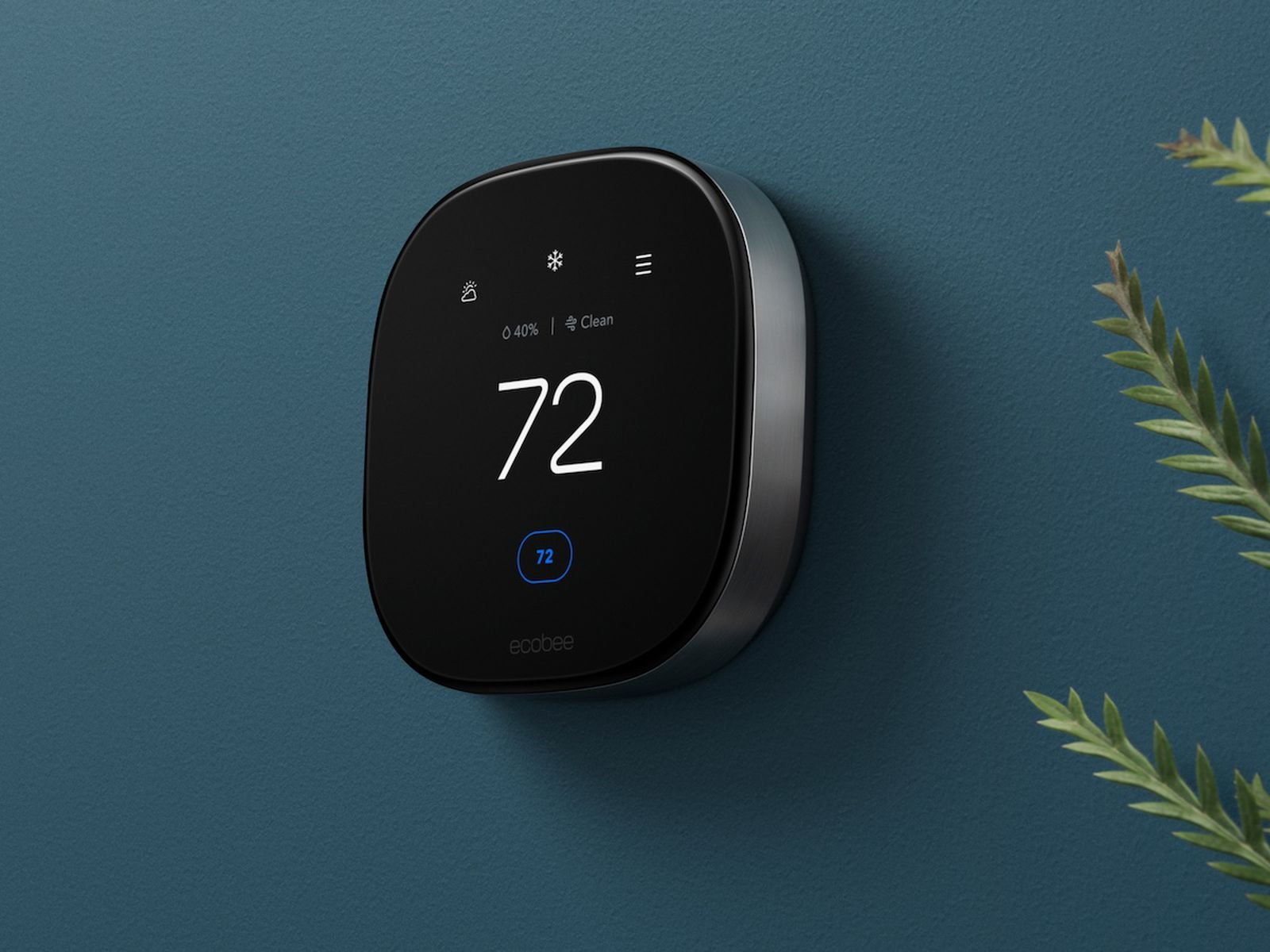
Try to avoid setting your AC below 70 degrees. If you set it too low your AC unit will run longer to reach that lower temp and then once it gets too low it may be hard to balance out. It’s better to set it at the highest possible temperature that you’re still comfortable at.
If you’re using an older AC system, then it may be time to upgrade to an energy-efficient unit. Even if your system is only 10 years old Energy.gov reports that you could save between 20-40% in cooling costs.
Also, don’t forget to check your AC air filters and make sure they’re regularly replaced. A dirty filter slows down the airflow so your system has to use more energy to cool your home. Experts recommend replacing them every 3 months or so (US Home Filter).
Don’t Forget Good Insulation and Sealing
Something that’s easy to overlook, but contributes to energy waste is inefficient insulation and sealing. Especially if you have an older home, cool air can be lost through small openings around windows and doors.
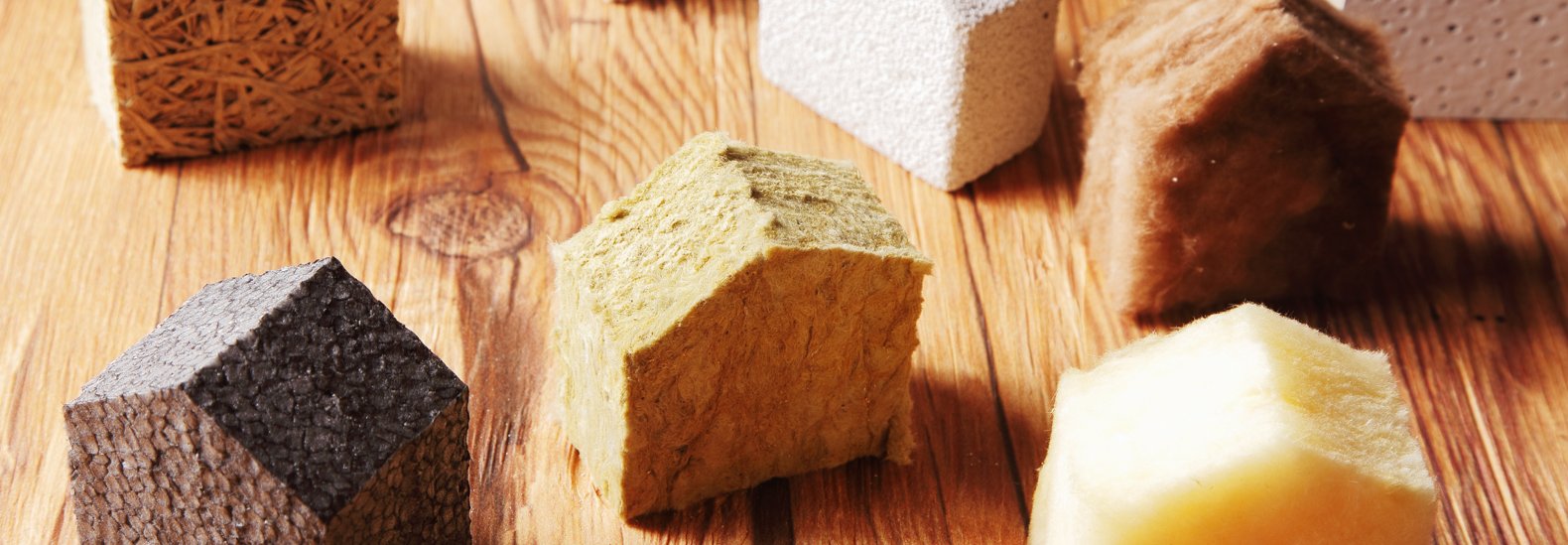
Air loss through windows is responsible for 25-30% of cooling energy use (Energy.gov). That’s why you’ll want to make sure everything is well sealed. Or better yet, upgrade to new energy-efficient windows.
Though insulation is commonly associated with keeping in heat, it’s also important when you want to keep cool air inside during the summer. If you need to re-insulate your home, for a double win, think about using eco-friendly insulation.
—-
Doing one of these things on its own isn’t necessarily going to have a big impact but by implementing a combination of these tips, you’ll start to notice a difference.





